The recent escalation between India and Pakistan has brought the world to the brink of a potential military confrontation. On the night of May 7-8, 2025, Pakistan launched a provocative attack using drones and missiles targeting several military installations in India.

India’s Integrated Counter UAS Grid and Air Defence systems successfully neutralized the incoming threats, showcasing the country’s advanced defence capabilities. This decisive response has been seen as a significant demonstration of India’s military prowess, particularly in the context of the India Pakistan conflict May 2025.
Key Takeaways
- The Pakistan military attempted to engage targets in India using drones and missiles.
- India’s defence systems effectively countered the threats, neutralizing the attack.
- The incident has escalated tensions between the two nations, drawing international attention.
- The success of India’s Integrated Counter UAS Grid highlights its advanced defence technology.
- The event is a significant development in the ongoing india pakistan conflict.
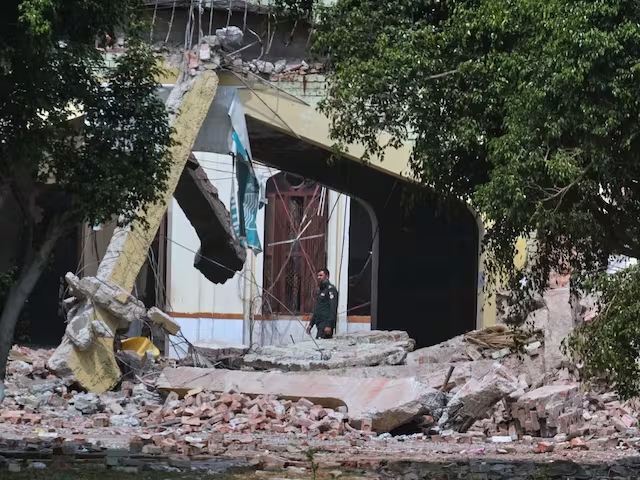
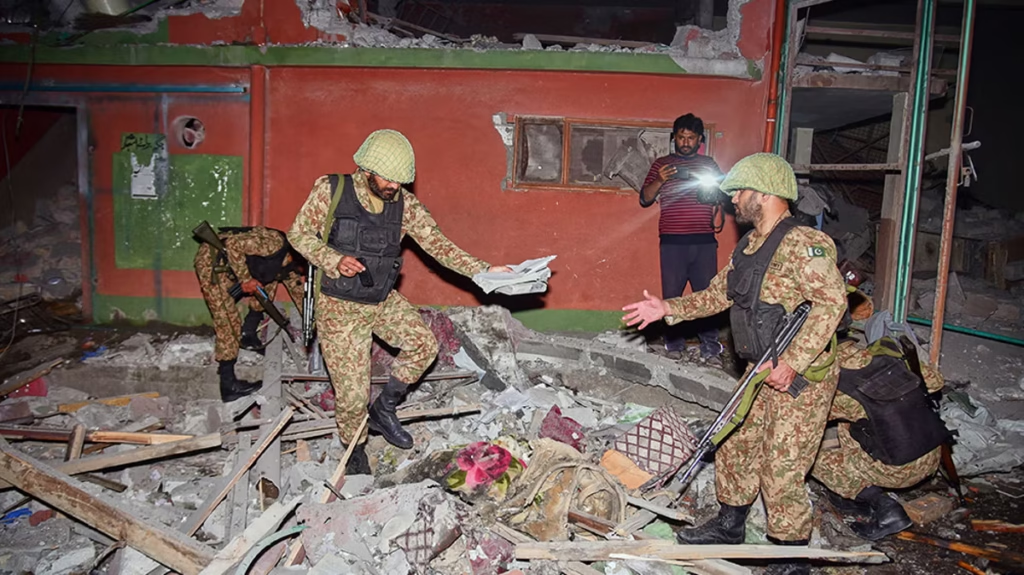
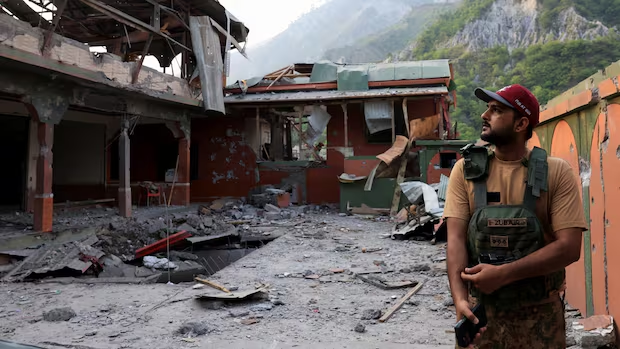


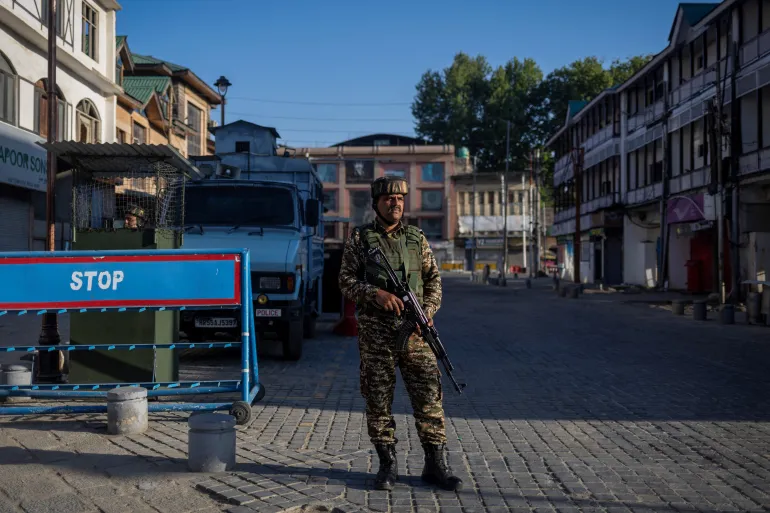
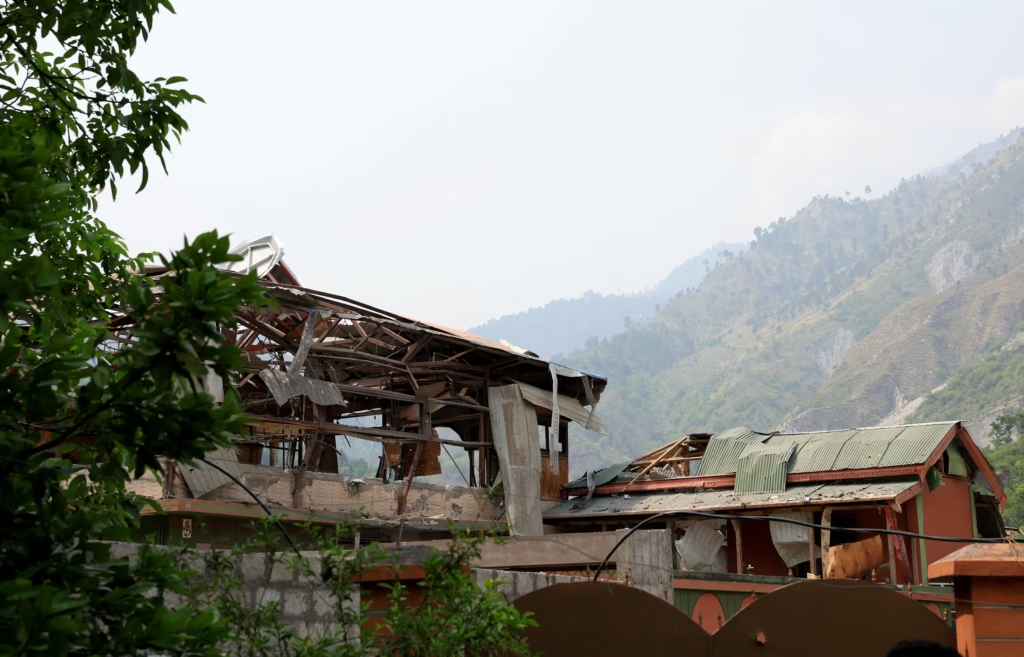


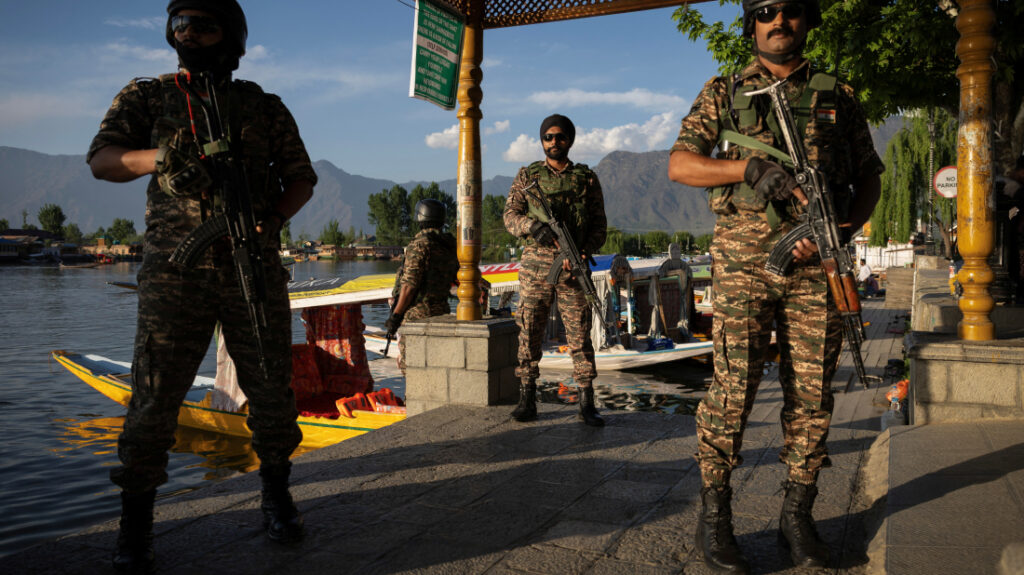

The May 7-8 Night Attack: Unfolding of Events
Pakistan’s military provocation on the night of May 7-8 triggered a robust response from India. The evening saw a significant escalation in the ongoing conflict between the two nations, with Pakistan launching drones and missiles at Indian military bases.
Pakistan’s Initial Military Provocation on Indian Bases
Pakistan initiated the attack by launching a barrage of missiles and drones targeting various Indian military installations. The Indian defense systems quickly detected these incoming threats, and the country’s military prepared for a counter-response. Debris from the Pakistani attacks was later recovered from several locations across the border, confirming the scale of the provocation.
Key aspects of Pakistan’s initial attack:
- Multiple missile launches
- Drone deployments targeting Indian bases
- Wide-area coverage of the attack
India’s Detection and Immediate Response
India’s advanced defense systems played a crucial role in detecting the incoming Pakistani missiles and drones. Upon detection, the Indian military swiftly activated its counter-measures, neutralizing the threats and preparing for a potential counter-attack. The effectiveness of India’s response was evident in the successful interception of the Pakistani projectiles.
The Indian defense systems’ ability to detect and respond to the attack highlighted the country’s military preparedness.
Hour-by-Hour Timeline of the Overnight Conflict
The conflict unfolded over several hours, with key events marking the escalation and response. Here is a brief timeline:
- 22:00 hours: Pakistan launches initial missile attack
- 22:15 hours: India detects the incoming missiles and activates defense systems
- 22:30 hours: India neutralizes the Pakistani missiles
- 23:00 hours: India prepares for a counter-response
The events of the night of May 7-8 demonstrated India’s military capabilities and its readiness to respond to external threats. The successful neutralization of Pakistan’s missile attack marked a significant moment in the conflict, showcasing India’s defense prowess.
Operation Sindoor LIVE: India’s Strategic Counter-Strike
In a bold move, India initiated Operation Sindoor to neutralize Pakistan’s air defense capabilities. This operation was a direct response to the escalating tensions between the two nations.
Objectives and Planning Behind Operation Sindoor
Operation Sindoor is a multi-pronged operation aimed at securing strategic dominance and neutralizing terrorist infrastructure. The planning involved meticulous intelligence gathering and strategic coordination among various branches of the Indian defence forces.
Military Assets and Technology Deployed
The operation utilized advanced military assets, including drones, fighter jets, and precision-guided munitions. India’s defence forces leveraged cutting-edge technology to execute the operation effectively.
| Military Asset | Role in Operation Sindoor |
|---|---|
| Drones | Surveillance and Target Acquisition |
| Fighter Jets | Aerial Combat and Suppression of Enemy Air Defenses |
| Precision-Guided Munitions | Precision Strikes on Enemy Infrastructure |
India’s Warning to Pakistan: “Ball in Your Court”
Following the successful execution of Operation Sindoor, India issued a stern warning to Pakistan, stating that the “ball is in your court.” This diplomatic messaging underscored India’s readiness to defend its sovereignty while leaving the next move to Pakistan.

India Pakistan Conflict May 2025 Operation Sindoor LIVE Updates Lahore Air Defense Neutralization
India’s strategic counter-attack on Lahore’s air defense network marked a significant escalation in the India-Pakistan conflict. The precision strikes conducted under Operation Sindoor LIVE updates have revealed the extensive damage inflicted on Lahore’s military installations.
Precision Strikes on Lahore’s Air Defense Network
The Indian Air Force executed a series of targeted strikes on key installations within Lahore’s air defense network. These strikes were designed to neutralize Pakistan’s ability to respond effectively to India’s military operations.
Key Installations Targeted
The primary targets included radar stations, surface-to-air missile sites, and command centers. These installations were crucial to Pakistan’s air defense capabilities, and their destruction significantly impaired Lahore’s defensive posture.
Strategic Significance of Lahore’s Military Infrastructure
Lahore’s military infrastructure plays a vital role in Pakistan’s defense strategy. The city’s air defense network is a key component of this infrastructure, providing protection against aerial threats. By targeting this network, India aimed to gain a strategic advantage in the conflict.
Confirmed Damage Assessment by Indian Intelligence
According to Indian intelligence reports, the precision strikes resulted in significant damage to Lahore’s air defense capabilities. The exact extent of the damage is still being assessed, but initial reports indicate a substantial weakening of Pakistan’s defensive posture.
| Installation | Damage Assessment |
|---|---|
| Radar Stations | Destroyed |
| Surface-to-Air Missile Sites | Disabled |
| Command Centers | Compromised |
Pakistan’s Compromised Defense Posture After Strikes
The strikes on Lahore’s air defense network have left Pakistan’s military in a vulnerable position. The loss of key installations has compromised their ability to defend against future attacks, potentially altering the balance of power in the region.
The aftermath of the strikes has seen a significant shift in the military dynamics between India and Pakistan. With Lahore’s air defense network severely compromised, Pakistan faces the challenge of rebuilding its defenses while under continued threat from Indian military assets.
Thwarted Attack: How India Prevented Missile Strikes on 15 Cities
Pakistan’s attempt to launch a missile strike on multiple Indian cities was foiled by India’s robust air defense systems. This successful interception prevented potential catastrophic damage to 15 major urban centers across India.
Pakistan’s Intended Urban Targets Across India
Intelligence reports indicated that Pakistan had planned to target several major Indian cities, including Delhi, Mumbai, Bengaluru, and Hyderabad, among others. These cities are significant economic and cultural hubs, and a successful attack would have resulted in massive loss of life and infrastructure damage.
The intended targets were diverse, ranging from financial centers to densely populated residential areas. India’s intelligence agencies had been monitoring the situation closely, enabling a swift response to the impending threat.
India’s Multi-Layered Missile Interception Systems
India’s air defense capabilities, including the Barak-8 and Akash systems, played a pivotal role in countering the Pakistani missile threat. The Barak-8 system, developed jointly with Israel, is capable of intercepting incoming missiles at various altitudes, while the Akash system is an indigenous surface-to-air missile defense system.
“Our air defense systems demonstrated exceptional capability and precision in neutralizing the threat,” said a defense official. The multi-layered defense architecture allowed for a robust response, ensuring that the incoming missiles were detected and intercepted effectively.
Civilian Areas Protected by Defensive Measures
The protective measures in place for civilian areas were comprehensive, involving not just the interception of missiles but also evacuation drills and emergency response planning. India’s civil defense protocols were activated, ensuring that citizens were prepared for any eventuality.
As a result of these defensive measures, civilian casualties were minimized. The successful interception of Pakistani missiles was a testament to India’s advanced defense capabilities and strategic preparedness.
“India’s ability to thwart Pakistan’s missile attack underscores the country’s advancements in air defense technology and its commitment to protecting its citizens.”
Prime Minister Modi’s Emergency Security Cabinet Meeting
In response to the escalating conflict with Pakistan, Prime Minister Narendra Modi convened an emergency security cabinet meeting. This critical gathering was attended by key officials who played pivotal roles in shaping India’s strategic response to the crisis.
Key Officials Present and Their Roles
The meeting included prominent figures such as Defense Minister Rajnath Singh, National Security Adviser Ajit Doval, and other senior officials from the defense and security establishments. Rajnath Singh’s statement today highlighted the government’s resolve to take all necessary measures to safeguard national security.
| Official | Role |
|---|---|
| Rajnath Singh | Defense Minister |
| Ajit Doval | National Security Adviser |
| Narendra Modi | Prime Minister |
Strategic Decisions and Directives Issued
During the meeting, several strategic decisions were made to enhance India’s military readiness and response capabilities. Directives were issued to strengthen air defense systems and to prepare for potential future escalations in the India Pakistan conflict May 2025.
India’s High Alert Status and Military Readiness
Following the meeting, India was placed on high alert, with the military on standby to respond to any further provocations. Measures such as India blackout precautions were also implemented to ensure civilian safety and minimize potential disruptions.
Official Statements: India’s Strong Diplomatic Response
The Indian government has launched a robust diplomatic campaign, presenting evidence of Pakistan’s hostile intentions. This move is part of a broader strategy to address the escalating tensions between the two nations.
Foreign Secretary’s Address: “Pakistan Lies Since Birth”
India’s Foreign Secretary delivered a scathing address, stating that “Pakistan lies since birth.” This strong statement was backed by evidence of Pakistan’s aggression, including intelligence reports and intercepted communications. The Foreign Secretary highlighted a historical pattern of denial by Pakistan, referencing past incidents where Pakistan had denied involvement in various conflicts.
Evidence Presented of Pakistan’s Aggression
The evidence presented included documents and recordings that demonstrated Pakistan’s role in initiating the recent conflict. This evidence was crucial in establishing the narrative that Pakistan was the aggressor.
Historical Pattern of Denial Referenced
The Foreign Secretary also referenced Pakistan’s historical pattern of denial, pointing out that this was not the first time Pakistan had been accused of aggression. The statement was supported by a detailed timeline of past incidents, reinforcing the argument that Pakistan’s actions were not isolated.
Defense Ministry and Military Spokespersons’ Briefings
The Defense Ministry and military spokespersons held detailed briefings to update the public on the ongoing conflict. These briefings provided insights into the military operations and the strategic decisions behind India’s response. The briefings were transparent about the objectives of the operations and the measures taken to minimize civilian casualties.
International Diplomatic Outreach by India
India has also been actively engaging in international diplomatic outreach. The government has been in touch with various countries, apprising them of the situation and seeking support. India has filed a complaint with the United Nations Security Council (UNSC), urging the international community to take note of Pakistan’s aggression.
Here is a summary of key diplomatic actions taken by India:
| Diplomatic Action | Description | Status |
|---|---|---|
| UNSC Complaint | Filed a complaint against Pakistan’s aggression | Pending |
| Bilateral Talks | Engaged with key countries to garner support | Ongoing |
| Public Statements | Issued strong statements condemning Pakistan’s actions | Completed |
Pakistan’s Counterclaims and Reported Casualties
Following the recent military escalation, Pakistan has denied initiating the conflict, claiming that India was the aggressor. This denial is part of a broader narrative from Pakistan regarding the events of May 7-8.
Islamabad’s Denial of Initiating Military Action
Pakistan’s government has maintained that it did not start the military action, instead asserting that India was responsible for the escalation. Pakistan’s Foreign Office has released statements calling India’s actions “unprovoked and aggressive.” This stance is consistent with previous conflicts between the two nations, where each side has blamed the other for initiating hostilities.
Claims of Downing 25 Indian Drones: Fact or Fiction?
Pakistan has also claimed to have downed 25 Indian drones during the conflict, a claim that India has disputed. The veracity of this claim remains uncertain, with both sides presenting conflicting accounts of the aerial engagements. The incident highlights the intense competition in the airspace during the conflict, with both nations employing advanced drone technology.
Pakistan Reports: 31 Killed, 57 Injured in Indian Strikes
According to Pakistani reports, the Indian strikes resulted in significant casualties, with 31 killed and 57 injured. The affected areas included military installations and surrounding civilian zones. The Pakistani government has vowed to investigate these incidents and provide support to the affected families.
The conflict between India and Pakistan continues to unfold, with both sides presenting different narratives about the events and their consequences. As the situation develops, international attention remains focused on the region, with many calling for de-escalation and a peaceful resolution.
- Pakistan denies initiating the military conflict.
- Claims of downing 25 Indian drones are disputed.
- Reported casualties from Indian strikes: 31 killed, 57 injured.
Military Technology Behind India’s Successful Counter-Operation
India’s military response was characterized by the deployment of sophisticated technologies that neutralized Pakistan’s air defense. The success of the counter-operation can be attributed to a combination of advanced military assets and strategic tactics.
Air Defense Suppression Tactics and Equipment
The Indian Air Force employed a range of technologies to suppress Pakistan’s air defense. Radar jamming technology played a crucial role in disrupting the enemy’s ability to detect and track Indian aircraft.
Radar Jamming Technologies Employed
Radar jamming involves the use of electronic warfare to disrupt or disable radar systems. India’s defense forces utilized advanced radar jamming technologies to create “electronic noise” that overwhelmed Pakistan’s radar, rendering it ineffective.
Role of Rafale Fighter Jets and Brahmos Missiles
The Rafale fighter jets were instrumental in the counter-operation, providing air superiority and precision strike capabilities. Equipped with advanced avionics and weaponry, these jets effectively targeted Pakistan’s air defense infrastructure. The Brahmos missiles, with their high speed and accuracy, were used to destroy key military assets.
India’s Anti-Missile Shield: Akash and S-400 Systems
India’s anti-missile shield, comprising the Akash and S-400 systems, provided robust protection against incoming missiles. The Akash surface-to-air missile system demonstrated its capability to intercept and destroy enemy aircraft and missiles.
| System | Capability | Performance |
|---|---|---|
| Akash | Surface-to-Air Missile | High interception accuracy |
| S-400 | Long-range Surface-to-Air Missile | Effective against multiple targets |
DRDO’s Indigenous Defense Technologies in Action
The Defense Research and Development Organisation (DRDO) has been at the forefront of developing indigenous defense technologies. The successful deployment of these technologies during the counter-operation highlighted India’s growing self-reliance in defense manufacturing.
Global Reactions: International Community Urges De-escalation
With tensions between India and Pakistan reaching a boiling point, international leaders stepped in to advocate for calm. The escalating conflict has drawn significant attention from the global community, with various countries and international organizations calling for de-escalation.
United States State Department’s Official Response
The US State Department has issued a statement expressing concern over the escalating violence between India and Pakistan. The US government has called for restraint on both sides, emphasizing the need for diplomatic resolution. According to the State Department spokesperson, “We are deeply concerned about the potential for further escalation and the humanitarian impact on the people of the region.”
China’s Position and Potential Mediation Role
China, a long-time ally of Pakistan, has expressed its concern over the escalating conflict and has called for an immediate ceasefire. China has also offered to facilitate dialogue between India and Pakistan, leveraging its diplomatic relationships with both countries to potentially play a mediation role.
United Nations Security Council Emergency Consultations
The UN Security Council has convened an emergency meeting to discuss the India-Pakistan conflict. The Council has issued a statement urging both countries to exercise restraint and to work towards a peaceful resolution. The UN Secretary-General has also expressed his concern over the situation, calling for an immediate cessation of hostilities.
The international community’s response reflects the gravity of the situation and the potential for the conflict to have far-reaching consequences. As the situation continues to unfold, the global community remains vigilant, urging India and Pakistan to work towards a peaceful resolution.
Historical Context: Evolution of India-Pakistan Military Confrontations
Understanding the historical context of the India-Pakistan conflict is crucial to grasping the nuances of the current military escalation. The conflict between the two nations has a long and complex history, with various military confrontations that have shaped the current scenario.
Comparison to 2019 Pulwama-Balakot Crisis
The recent military escalation draws several parallels with the 2019 Pulwama-Balakot crisis. In both instances, Pakistan’s military provocations were met with swift and decisive action by India. The 2019 crisis saw India carrying out airstrikes on Balakot, a significant escalation that was followed by a series of diplomatic and military moves. Similarly, the current conflict has seen India neutralize Lahore’s air defense after Pakistan’s failed attack. A comparison of the two crises reveals a pattern of military strategies employed by both countries.
| Year | Event | Indian Response |
|---|---|---|
| 2019 | Pulwama terrorist attack | Balakot airstrikes |
| 2025 | Pakistan’s military provocation | Neutralization of Lahore’s air defense |
Parallels with Kargil War and Previous Border Conflicts
The current conflict also draws parallels with the Kargil War and other previous border conflicts between India and Pakistan. The Kargil War, fought in 1999, was a significant military confrontation that highlighted the volatile nature of the India-Pakistan border. The conflict saw India responding to Pakistan’s infiltration with military action, ultimately pushing back against the intruders. Similarities can be seen in the current conflict, where India has taken decisive action against Pakistan’s military provocations.
Changing Military Strategies in the Subcontinent
The India-Pakistan conflict has seen a significant evolution in military strategies over the years. The use of advanced military technology, including precision-guided munitions and air defense systems, has become increasingly common. The current conflict has seen India employing its anti-missile shield, including the Akash and S-400 systems, to counter Pakistan’s military provocations. This shift in military strategy has significant implications for the region, highlighting the need for continued diplomatic efforts to reduce tensions.
Economic and Social Impact of the Military Escalation
The conflict between India and Pakistan has triggered significant economic and social repercussions. As the military escalation continues, various sectors are being impacted, from financial markets to social media trends.
Financial Markets: Defense Stocks Surge, General Indices Fall
The military standoff has led to a surge in defense stocks as investors seek safe havens in defense-related companies. Conversely, general indices have fallen due to uncertainty and geopolitical tensions. The Sensex crash is a notable example, reflecting investor anxiety. Meanwhile, defense stocks surge as the demand for military equipment and technology increases.
Border Area Evacuations and Emergency Protocols
In response to the escalating conflict, border areas have witnessed significant evacuations. Emergency protocols have been put in place to ensure the safety of civilians. The impact on local economies is substantial, with supply chain disruptions affecting businesses and daily life.
Social Media Trends and Public Sentiment Analysis
Social media platforms are reflecting the tense situation, with public sentiment oscillating between concern and nationalism. Tourism advisory updates have been issued, cautioning travelers against visiting border regions. The INR vs USD fluctuation is also being closely watched, as it affects international trade and travel.
The ongoing conflict between India and Pakistan is having far-reaching consequences, impacting not just the immediate region but also global markets and public sentiment.
Strategic Analysis: How Delhi Countered Lahore’s Air Defence Overnight
The overnight operation that neutralized Lahore’s air defense was a masterclass in precision and strategic planning by India’s military. This decisive action was part of Operation Sindoor LIVE updates, which showcased India’s capability to launch targeted strikes against critical enemy infrastructure.
Tactical Advantages Gained by India’s Precision Strikes
India’s precision strikes against Lahore’s air defense network provided significant tactical advantages. By disabling Pakistan’s air defense capabilities, India gained air superiority, allowing for enhanced surveillance and strike capabilities. This move was critical in the India Pakistan conflict May 2025, as it shifted the military balance in favor of India.
Nuclear Deterrence Dynamics in the Current Crisis
The crisis highlighted the complex dynamics of nuclear deterrence in South Asia. Both nations possess nuclear capabilities, making the conflict potentially volatile. The international community watched closely as nuclear threat South Asia became a pressing concern, with global powers urging restraint.
Military Balance Shift in South Asia
The successful neutralization of Lahore’s air defense marked a significant shift in the military balance between India and Pakistan. India’s advanced military technology and strategic planning gave it a considerable edge, potentially altering the regional security dynamics.
As quoted by a senior defense analyst,
“The precision and timing of India’s strike have sent a clear message to Pakistan and the world about India’s military capabilities.”
This statement underscores the strategic implications of India’s actions during theOperation Sindoor LIVE updates.
Conclusion: Navigating the Path Forward Amid Heightened Tensions
The India-Pakistan conflict has reached a critical juncture, with the recent military escalation on May 7-8, 2025, marking a significant turn in the ongoing tensions. As both nations maintain a high level of military readiness, diplomatic efforts continue to urge de-escalation in the region.
The latest updates on India-Pakistan military tension indicate a fragile situation, with India successfully neutralizing Lahore’s air defense network in response to Pakistan’s initial military provocation. The swift and strategic counter-strike, code-named Operation Sindoor, has been a significant development in the conflict, showcasing India’s military capabilities and readiness.
As the situation continues to unfold, the international community remains watchful, with the United States, China, and the United Nations calling for restraint. The current state of the conflict is marked by a heightened sense of alertness, with both sides on high military alert. The india pakistan border news today reflects the tense atmosphere, with ongoing diplomatic efforts aimed at reducing tensions.
The lahore military strike update has brought to the forefront the need for a peaceful resolution to the conflict. As the situation continues to develop, it is clear that a delicate balance must be maintained to prevent further escalation. The path forward will require careful diplomatic maneuvering and a commitment to de-escalation from both India and Pakistan.
FAQ
What happened between India and Pakistan on May 7-8?
Pakistan initiated a military provocation against Indian bases, which was detected and responded to by India, leading to a series of events and counter-actions between the two countries.
How did India counter Pakistan’s air strike attempt?
India utilized its multi-layered missile interception systems to thwart Pakistan’s missile attack, protecting civilian areas and neutralizing Lahore’s air defense network.
Is Pakistan planning another attack on India?
There is no concrete evidence to suggest that Pakistan is planning another attack, but India remains on high alert and is prepared to respond to any further aggression.
What is Operation Sindoor in the India-Pakistan conflict?
Operation Sindoor is India’s strategic counter-strike operation in response to Pakistan’s initial military provocation, involving precision strikes on Lahore’s air defense network and other military targets.
What were the targets of India’s precision strikes?
The targets included Lahore’s air defense network, military infrastructure, and other strategic locations, aiming to neutralize Pakistan’s defense capabilities.
How did India detect and respond to Pakistan’s initial provocation?
India detected Pakistan’s military provocation through its surveillance and intelligence systems, and responded immediately with a counter-strike, utilizing its military assets and technology.
What was the outcome of the conflict between India and Pakistan?
The conflict resulted in significant damage to Pakistan’s defense capabilities, with India successfully thwarting Pakistan’s missile attack and neutralizing Lahore’s air defense network.
What was the international community’s response to the conflict?
The international community, including the US and China, urged de-escalation, with the UN Security Council holding emergency consultations to address the crisis.
How did the conflict affect the economy and society?
The conflict led to a surge in defense stocks, a fall in general indices, evacuations in border areas, and emergency protocols being put in place, with social media trends and public sentiment being closely monitored.
What are the implications of the conflict for the military balance in South Asia?
The conflict has resulted in a shift in the military balance, with India gaining tactical advantages through its precision strikes, and the dynamics of nuclear deterrence being closely watched.
What is the current state of the conflict between India and Pakistan?
The situation remains tense, with both countries on high alert, and efforts being made towards de-escalation, with the international community playing a role in urging restraint.





















































